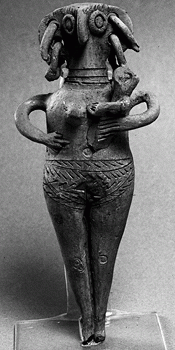American Journal of Archaeology | The Journal of the Archaeological Institute of America
You are here
Cyprus at the End of the Late Bronze Age: Crisis and Colonization or Continuity and Hybridization?
October 2008 (112.4)
Cyprus at the End of the Late Bronze Age: Crisis and Colonization or Continuity and Hybridization?
Ancient cultural encounters in the Mediterranean were conditioned by everything from barter and exchange through migration and military engagement to colonization and conquest. Within the Mediterranean, island relations with overseas polities were also affected by factors such as insularity and connectivity. In this study, we reconsider earlier interpretations of cultural and social interactions on Cyprus at the end of the Late Bronze Age and beginning of the Iron Age, between ca. 1200 and 1000 B.C.E. Examining a wide range of material evidence (pottery, metalwork, ivory, architecture, coroplastic art), we revisit notions (the “colonization narrative”) of a major migration of Aegean peoples to Cyprus during that time. We argue that the material culture of 12th–11th-century B.C.E. Cyprus reflects an amalgamation of Cypriot, Aegean, and even Levantine trends and, along with new mortuary traditions, may be seen as representative of a new elite identity emerging on Cyprus at this time. Neither colonists nor conquerors, these newcomers to Cyprus—alongside indigenous Cypriots—established new social identities as a result of cultural encounters and mixings here defined as aspects of hybridization.
Cyprus at the End of the Late Bronze Age: Crisis and Colonization or Continuity and Hybridization?
By Ioannis Voskos and A. Bernard Knapp
American Journal of Archaeology Vol. 112, No. 4 (October 2008), pp. 659–684
DOI: 10.3764/aja.112.4.659
© 2008 Archaeological Institute of America



Add new comment